An extract from the ‘Newsletter for the Friends of Cathays Cemetery’
Výpis z ‘Newsletter pro přátele hřbitova Cathays’.

In the north-east corner of Section E-K, you will find the grave of Jaroslav Kulhavý. Although provided by the Commonwealth War Graves Commission, it has a style reserved for Czechoslovak servicemen Jaroslav was born on 17th August 1919 in Mladá Boleslav, a city in central Bohemia.
V severovýchodním rohu sekce E-K se nachází hrob Jatoslav Kulhavý. Ačkoliv hřbitovní komise pověřená péčí o válečné hroby má pro československé vojáky vyhraženou jiné místo. Jaroslav se narodil 17. srpna 1919 v městě Mladá Boleslav, nacházející se ve středních Čechách.

At the beginning of the 2nd World War, he fled to Poland, where he was admitted to the Czech Legion. After moving on to France, he took part in the fighting during the retreat, until he was evacuated to England. In December 1940, he joined 311 Squadron, which was manned by Czech personnel, as a technician. He died on 4th December 1944, as a flight engineer on a Liberator that crashed shortly after take-off on a training flight from RAF Tain, in the north of Scotland. 311 Squadron was largely engaged in anti-submarine action.
Na začátku druhé světové války, odešel do Polska, kde byl přijat do české legie. Po příchodu do Francie, se účastnil ústupových bojů až po evakuaci do Anglie. V prosinci 1940, byl jako technik zařazen do 311. Sqn., československé perutě v RAF. Zemřel 4. prosince 1944 při cvičném letu po vzletu z letiště RAF, Tain na severu Skotska. 311. Sqn se do značné míry podílela na protiponorkových akcích.
Kulhavý was posthumously promoted to Colonel in the Czech Air Force. He was buried in Cathays Cemetery in accordance with his English wife’s wishes. At the end of the war, many relatives of the 510 Czech men who died while serving in the RAF, wanted the bodies of their loved ones returned to their home country. However, the cost of exhumation (today’s equivalent would be more than £25,000 per body) was considered unaffordable, so symbolic exhumation was adopted instead. A sample of soil from each of the airmen’s graves was placed in a temporary wooden urn and taken to Czechoslovakia towards the end of 1945, where the plan was to place them into permanent urns for formal interment at a national memorial site. The temporary urns were stored in boxes whilst planning for an appropriate memorial took place.
Jaroslav Kulhavý byl popsmrtně povýšen na plukovníka československého letectva. Na přání manželky byl pohřben na hřbitově v Cathays. Na konci války mnozí příbuzní 510 československých letců, kteří zemřeli při výkonu služby v RAF, chtěli ostatky svých blízkých vrátit do své rodné země. Náklady na exhumaci jednoho těla převyšovaly 25 000 liber a v té době se jevily jako nedoastupné a proto byla provedena symbolická exhumace. Z každého hrobu byla odebrána prsť, vložena do dřevěné urny a na konci roku 1945 převezena do Československa, kde měly být tyto urny pietně uloženy do národního památníku. V době plánování vhodného památníku byly dočasné uloženy do krabic.

In February 1948, the Communists took control of Czechoslovakia and, under this new regime, the urns were forgotten … and it remained like this for the next 40 years. On 15 January 1990, during the reconstruction of the National Monument in Prague, the boxes were re-discovered. Unfortunately, due to poor storage conditions, 63 of the wooden urns had rotted and their contents had mixed together. These were placed into one communal urn. The contents of the remaining 239 urns were placed in new urns. A few of these urns were returned to those families that could be traced and had requested the remains.
V únoru 1948 v Československu převzali veškerou moc komunisté a na urny se po celou dobu jejich čytřicetileté vlády zapomenulo. Dne 15. ledna 1990 při rekonstrukci Národního památníku v Praze na Žižkově, byly krabice s dřevěnými urnami z prstí hrobů padlých československých letců objeny. Jejich uložením v nevhodných podmínkách došlo ke zničení 63 uren a obsah uren se smíchal dohromady. Prsť z hrobů 239 uren byla vložena do nových uren. Některé z těchto uren byly na jejich žádost, předány pozůstalým a příbuzným letců.
A special memorial, with a crypt to house the urns, was finally built in the Prostějov Municipal Cemetery and unveiled at a ceremony on 22nd June 1998. Prostějov, in Moravia, was the home of the Military Aviation College where many of the Czech aircrew had trained. By this time, Czechoslovakia had split in two and some of the individual urns were passed to Slovakia. Other urns were interred at two other memorials in the Czech Republic, leaving the urns of 97 Czechoslovak RAF airmen, and the communal urn for 63 airmen to be placed at the Prostějov Memorial. Of these, symbolic urn No 242 contains the soil taken Jaroslav’s grave in Cathays Cemetery.
Na městském hřbitově v Prostějově byl postaven a při slavnostním ceremoniálu 22. června 1998, odhalen památník v jehož kryptě je symbolicky uložena prsť z 97 hrobů letců a jedna urna s prstí ze 63 hrobů padlých československých zahraničních letců, z nichž většina se naučila létat v letecké škole v Prostějově. V jedné, z těchto uren, která má č. 242 se nachází prsť z hrobu Jaroslava Kulhavého na hřbitově v Cathays. Po rozdělení Československa na dvě části, bylo několik (16) uren s prstí z hrobů čs. zahraničních letců předáno slovenským úřadům.

© Paul Jones

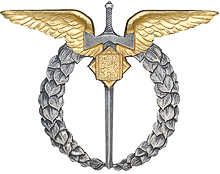


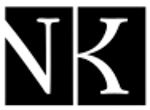

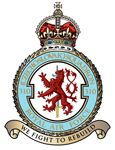
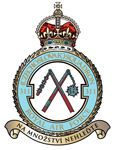
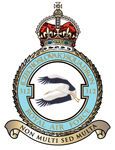
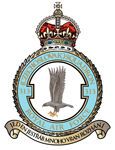


I was interested to read this article as this gentleman is buried opposite by grand parents. It would be nice to find out if he still has living relatives. I always place flowers on his grave and the gentleman to his side LE Fry. Gone but not forgotten x